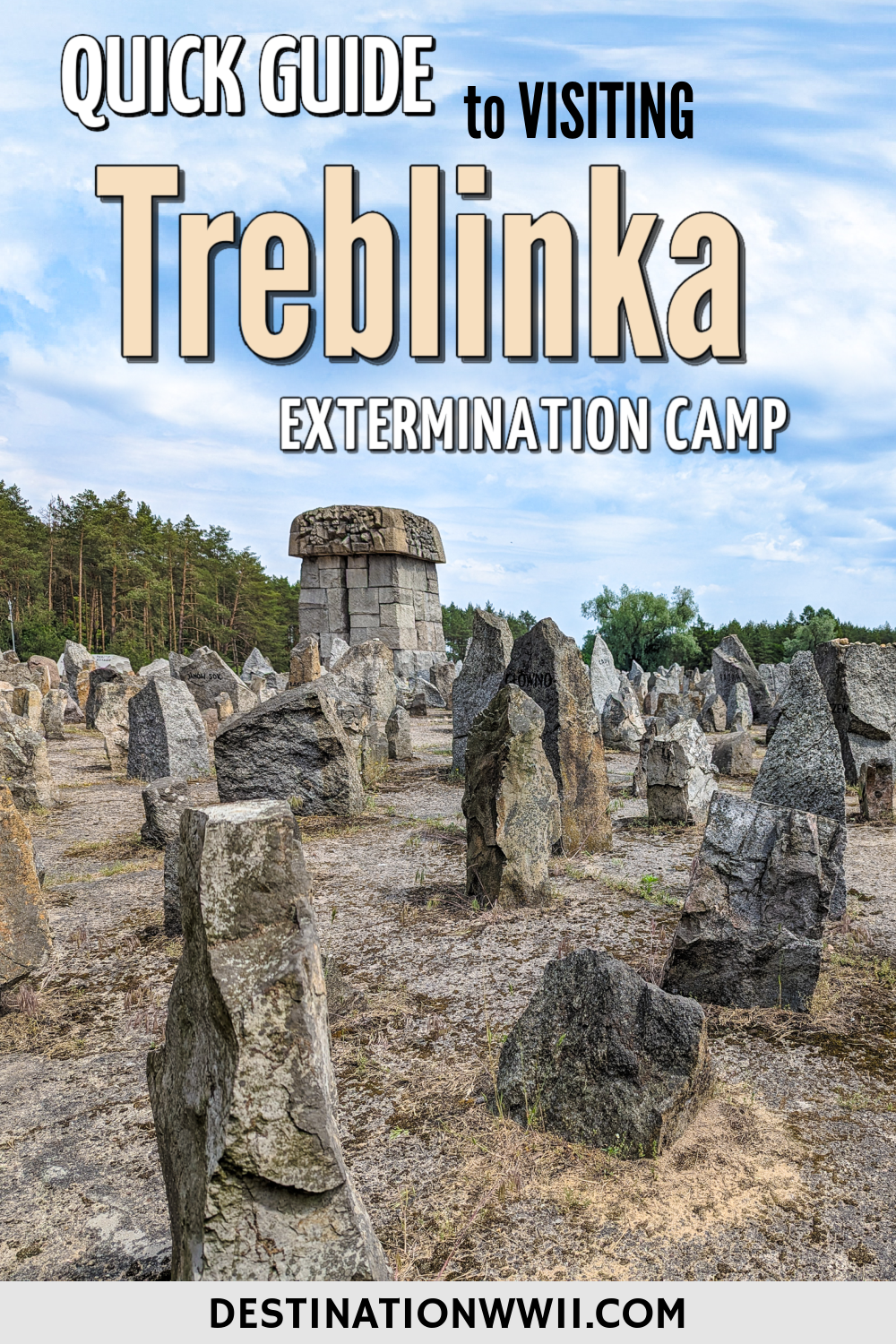Visiting Treblinka, you would never know it was the second-deadliest of all Nazi extermination camps, just behind Auschwitz. Though it claimed almost as many lives, nothing remains of the original site which largely remains hidden in the woods. Though there’s less to “see” here, it still has a very big story to tell.
This post gives you all the information you need for adding a trip to Treblinka into your Poland itinerary. Safe travels!
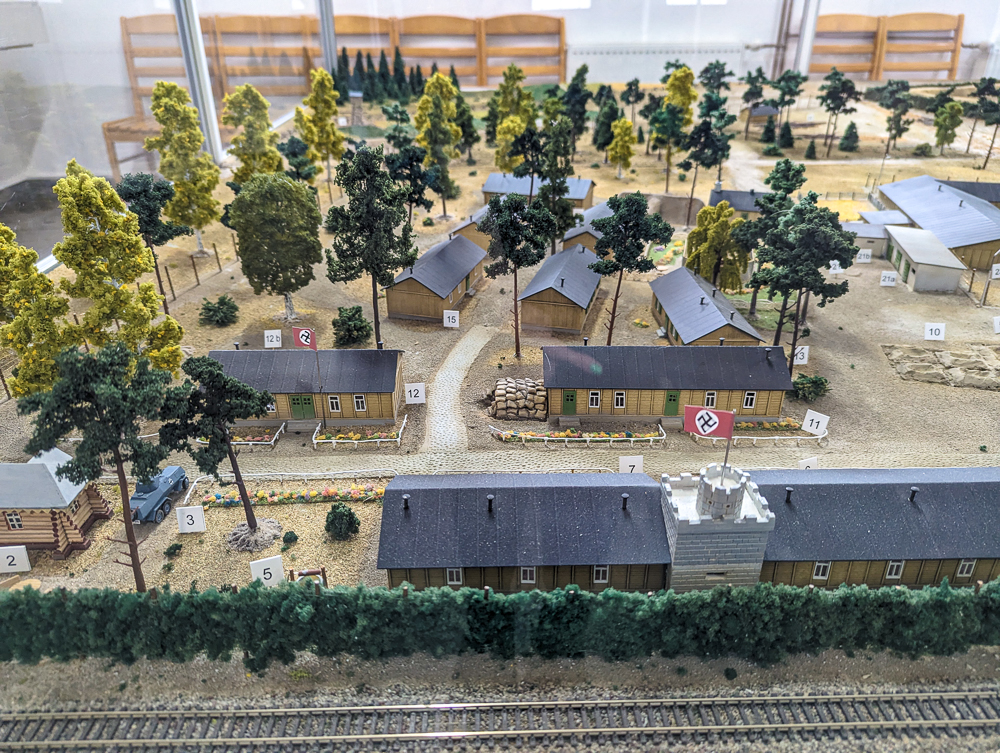
What is Treblinka?
Along with Auschwitz-Birkenau, Belzec, Chełmno, Majdanek, and Sobibór, Treblinka was one of the six major Nazi death camps during the Holocaust. It was a killing center established specifically for the extermination of Polish Jews as part of Operation Reinhard and the Nazi’s “Final Solution to the Jewish Question.”
The Nazi SS, with the help of authorities from the General Government in Poland, opened Treblinka as a forced labor camp in November 1941. Just seven months later, they expanded the camp to add a killing center (referred to as Treblinka II), hidden in the woods about a mile away.
The majority of staff hired to work the camp came from the T4 euthanasia program. Treblinka also utilized Sonderkommandos–specially chosen Jewish prisoners forced to work in the killing center, removing bodies from the gas chambers and either burying or burning them. Because of how much they knew, Sonderkommandos were regularly murdered anyway and replaced with new arrivals.
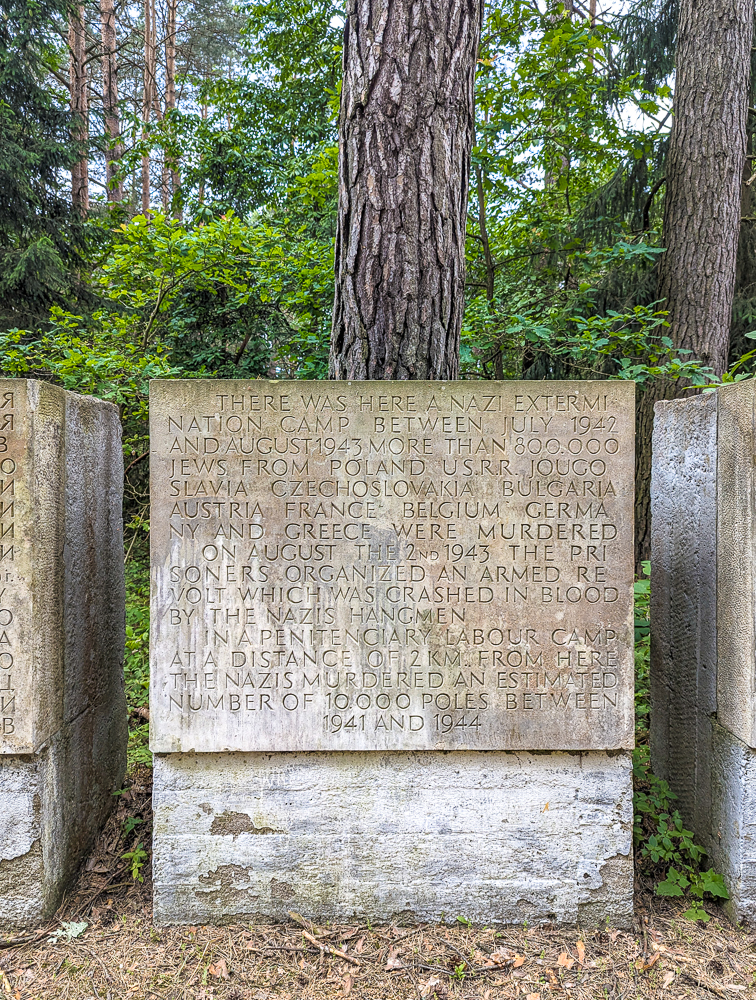
Treblinka as a killing center
Treblinka II operated from July 1942 until September 1943. The forced labor camp, Treblinka I, continued operating until July 1944. In that time, the SS murdered somewhere between 700,000 and 800,000 Jews, Roma, and Soviet POWs in the camp’s gas chambers or by shooting or other methods. (Exact numbers are impossible but extensive research puts the victim count somewhere around there.) After Auschwitz, Treblinka was the deadliest extermination camp.
The first transport of Jews to Treblinka II arrived on July 23, 1942 from the Warsaw ghetto. All following transports came mostly from occupied Poland, but also from Austria, Czechoslovakia, France, Germany, Greece, Yugoslavia, and the Soviet Union.
The preferred method of extermination involved gas chambers and carbon monoxide gas from engine exhaust. (Similar to the methods used at Belzec and Sobibór.) Lacking crematoria, the bodies were then burned on specially constructed grates out in the open.
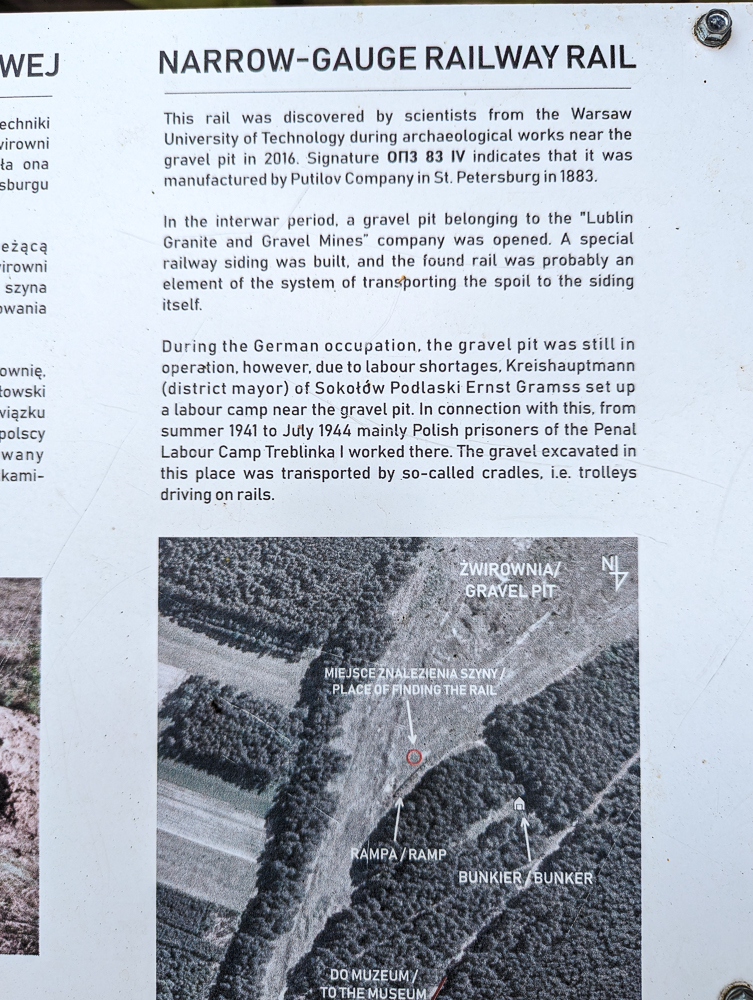
Treblinka Uprising
Early in 1943, Treblinka’s prisoners formed a resistance group. On August 2, fearing the camp would soon be liquidated and knowing they were going to die either way, they acted. They stole weapons from the armory, set buildings on fire, and blew up a petrol tank.
Hundreds of them stormed the main camp gate to try to escape. Many were killed instantly by machine-gun fire but around 300 of them managed to escape. Of those who escaped, most were quickly tracked down and killed. Of the ones who were able to escape, only about 100 survived the war.
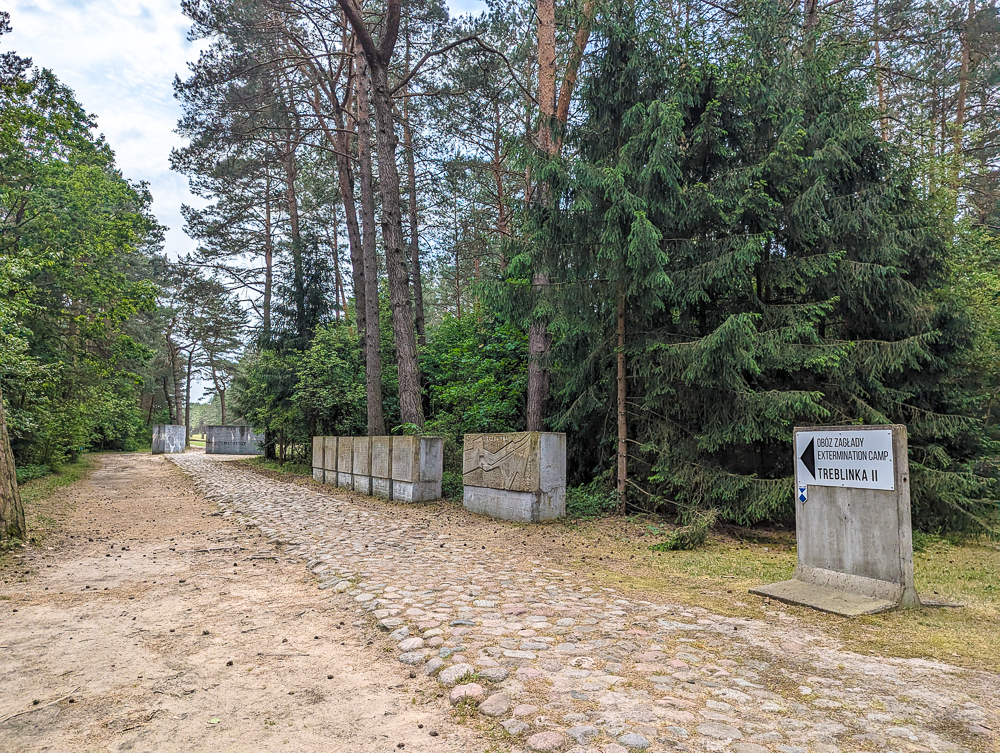
Camp liquidation
The prisoner uprising was covered up by the camp’s authorities and prisoner transports began to die down. The last transport arrived from nearby Białystok on August 23, 1943. From then until November 17, the camp was liquidated—its buildings were dismantled and the remaining prisoners were killed (shot with arrows to the back of the head).
Like what happened at Belzec and Sobibor, the SS plowed over the former killing center and burial ground at Treblinka and planted flowers to disguise the fact that anything evil had occurred here. Using bricks from the demolished gas chambers, they rebuilt a house on the property and installed a Ukrainian family there to pretend to be farmers. The Soviet Red Army took over the site at the end of July 1944.
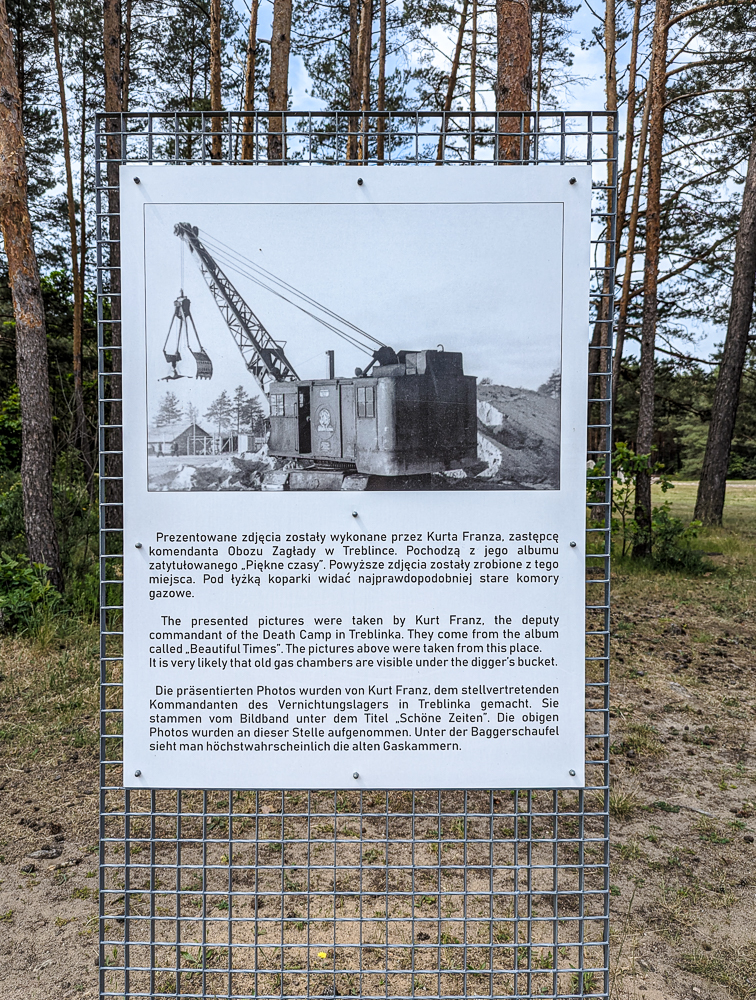
Visiting Treblinka today
Like Belzec and Sobibór, no original structures from the Treblinka extermination camp still exist today. Following the end of the war, the Soviet government made no attempt to preserve the site at Treblinka. The area was abandoned, eventually fenced off, and even further landscaped over.
In the late 1950s, nearly 200 farmers from nearby villages. purchased the site. Eventually, the giant monument you can see today was inaugurated here on April 21, 1958, at the former location of the gas chambers.
Visiting Treblinka today, you can visit a small museum on the camp’s history and see several monuments and memorial areas at the former location of Treblinka II (the killing center in the woods).
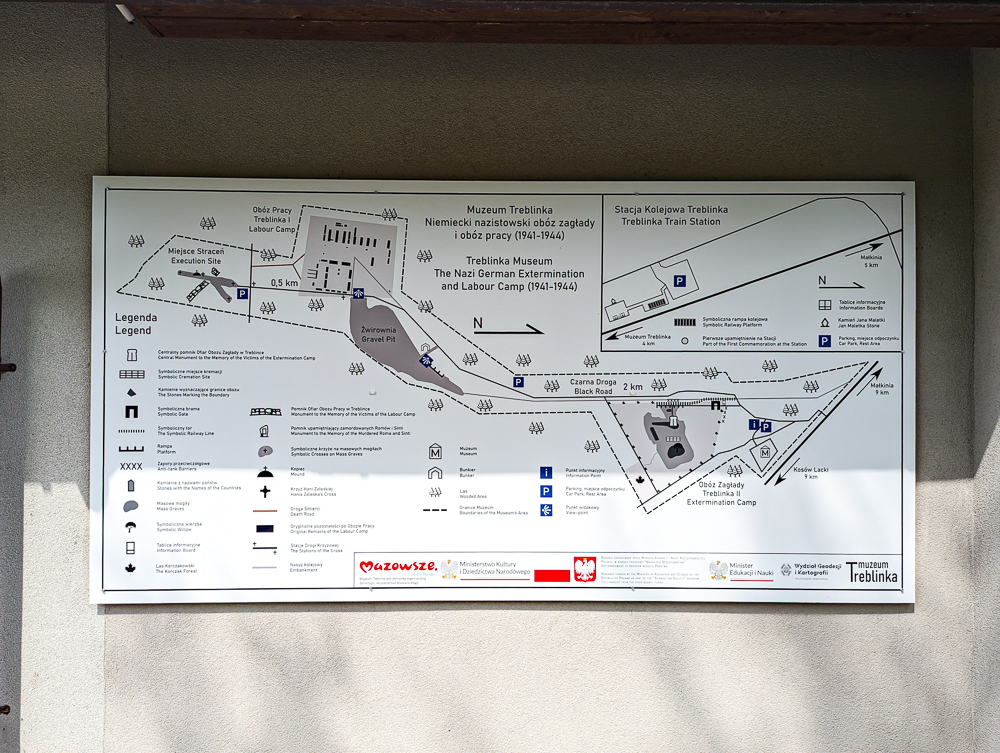
Why visit Treblinka?
Unlike some former camps like Auschwitz and Dachau, there aren’t any original camp structures to see here. Even so, one reason everyone should visit is simply to bear witness. The Nazi regime tried really hard to rid the world of these people and then did everything it could to cover up its crimes. These victims and what happened here could easily have vanished from history.
I feel we owe it to Treblinka’s victims to learn about their experiences, what they endured here, and how hard they fought to resist. And, to stick it to those who thought they could get away with it. There will never be a befitting punishment for these heinous crimes, but it’s important to say We see you and We know what you did. If for no other reason, visit Treblinka so that what happened here won’t be forgotten.
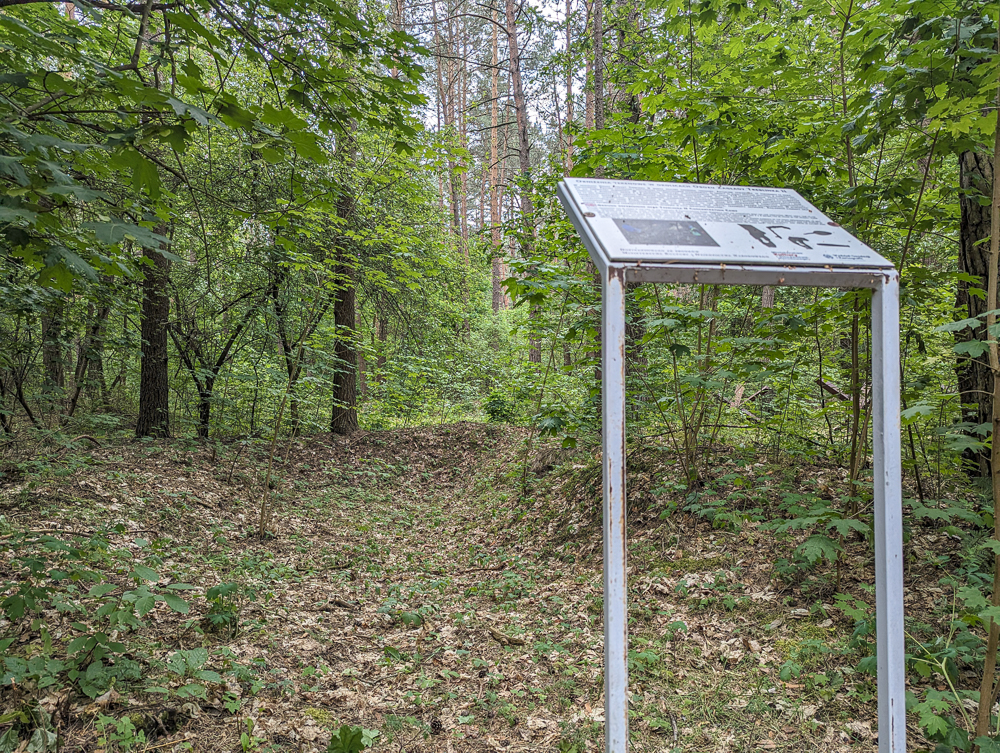
Where is Treblinka extermination camp?
Treblinka extermination camp museum is located in northeastern Poland, about halfway between Warsaw and Białystok.
How to get to Treblinka
This historical site is pretty remote, so driving to Treblinka is going to be the easiest and most efficient way to get here. (Rent a car here if you need one.) The Treblinka museum is a:
- 1 hour 20-minute drive from Warsaw
- 1 hour 20-minute drive from Białystok
- 2.5-hour drive from Lublin (and the Majdanek concentration camp)
GPS address: Muzeum Treblinka, 08-330 Kosów Lacki, Wólka Okrąglik 115, Poland
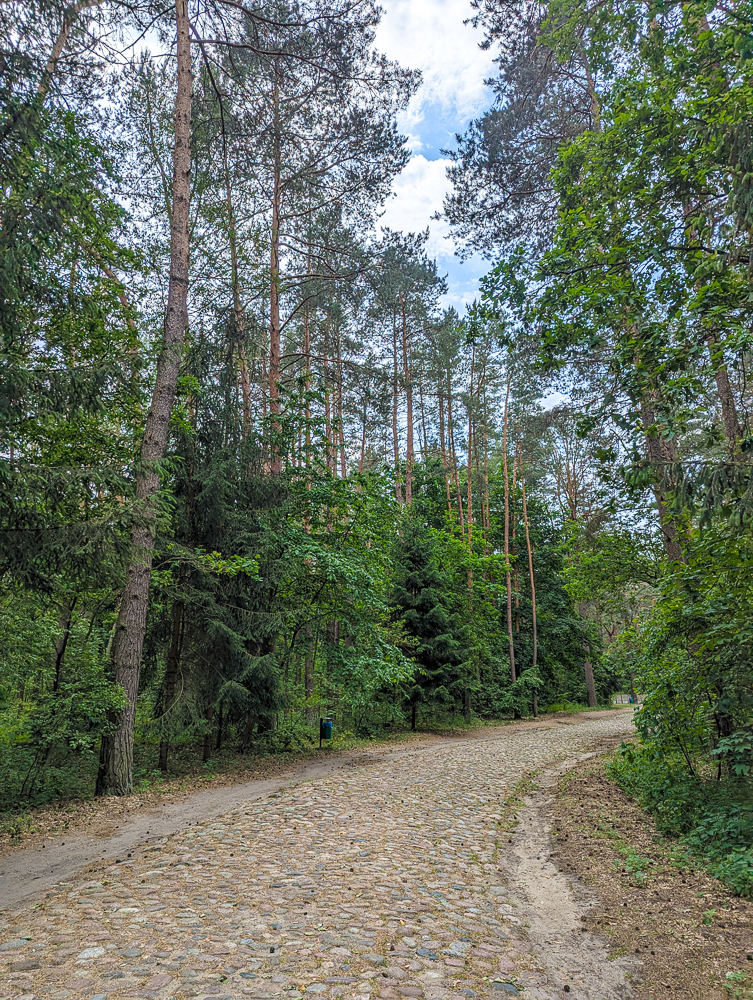
Once here, you’ll turn off the main road onto a side road where there’s a white sign that says Muzeum Treblinka. Continue down this road through the trees and follow the blue arrow signs until you reach the parking lot. You can pay for parking at the small building on the right and enter the museum grounds from here.
Also read: Driving in Poland: What You Need to Know Before You Hit the Road
Visiting Treblinka by tour
Given its proximity to Warsaw, you also have the option of visiting Treblinka on an organized day tour. Here are a few options to consider:
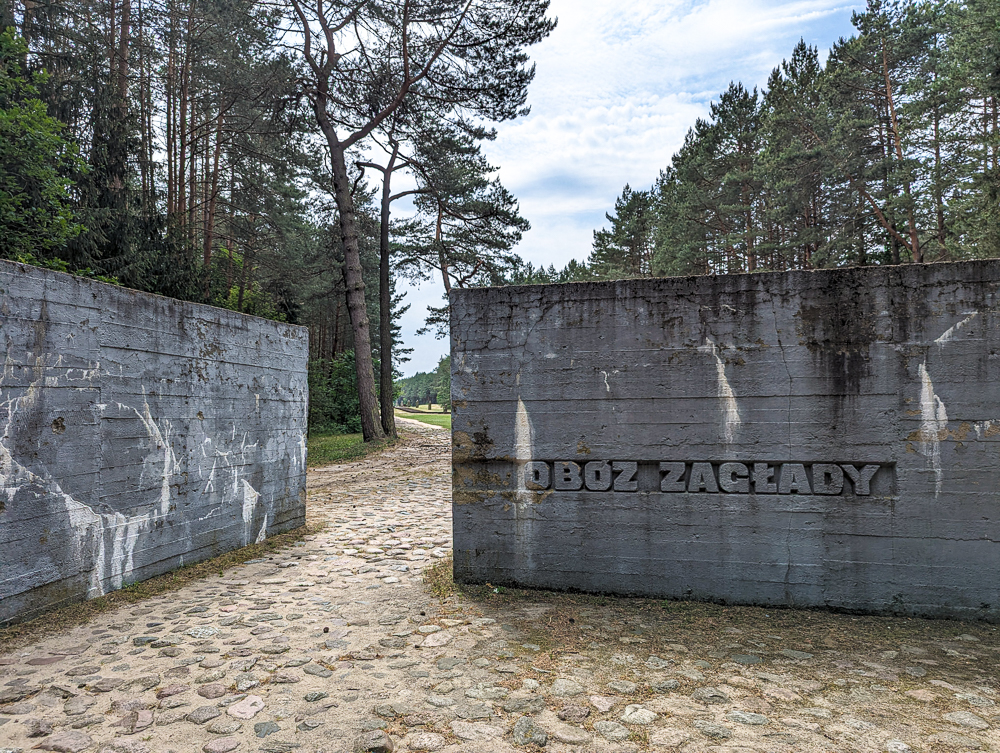
What you can see at Treblinka
Visiting Treblinka, you’ll be able to visit the small museum and several memorial areas, and explore some of the original camp locations (though no original buildings remain).
Treblinka Museum
The small museum at Treblinka has a permanent exhibition that presents the history of both of Treblinka’s two parts: the labor camp and the killing center. Because the camp was completely destroyed and covered up by the fleeing SS, much of the exhibit focuses on artifacts recovered from the archaeological research done here. It also includes a model of how the original camp was laid out.
Some of the exhibits are shown in both Polish and English, but some are only in Polish. (Have a translator app handy and this won’t be a problem.)
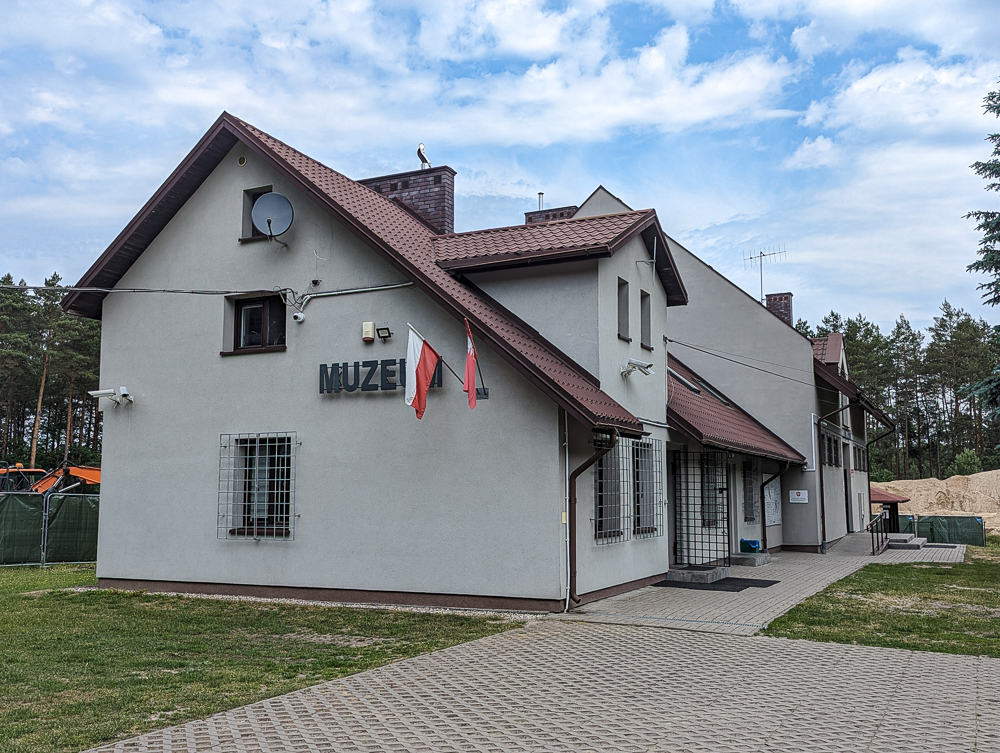
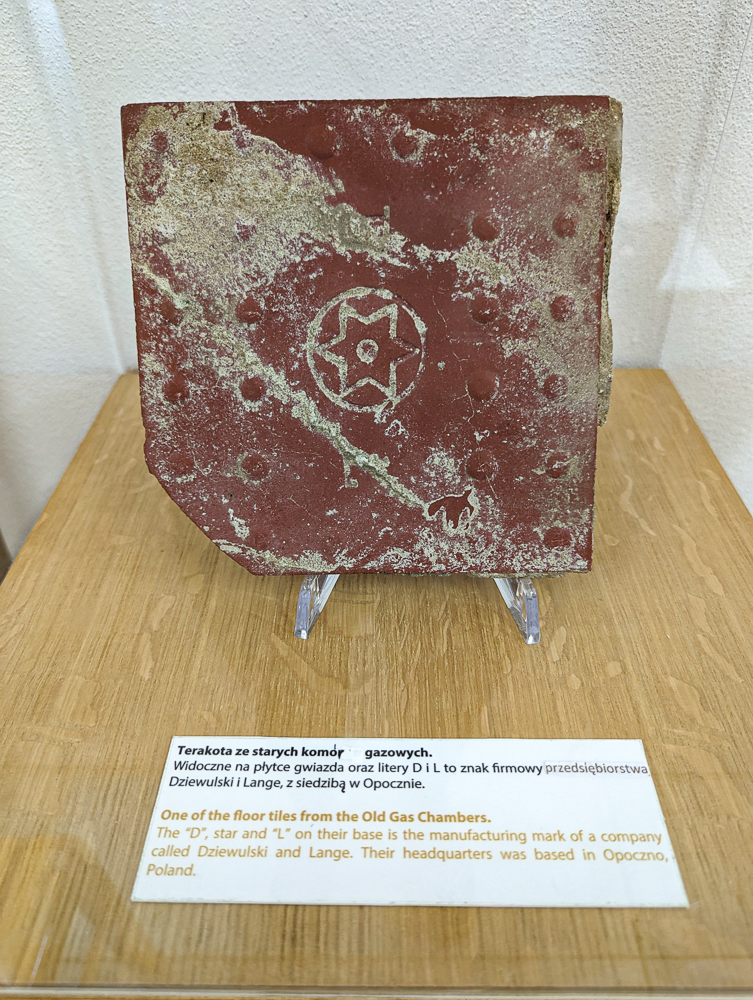
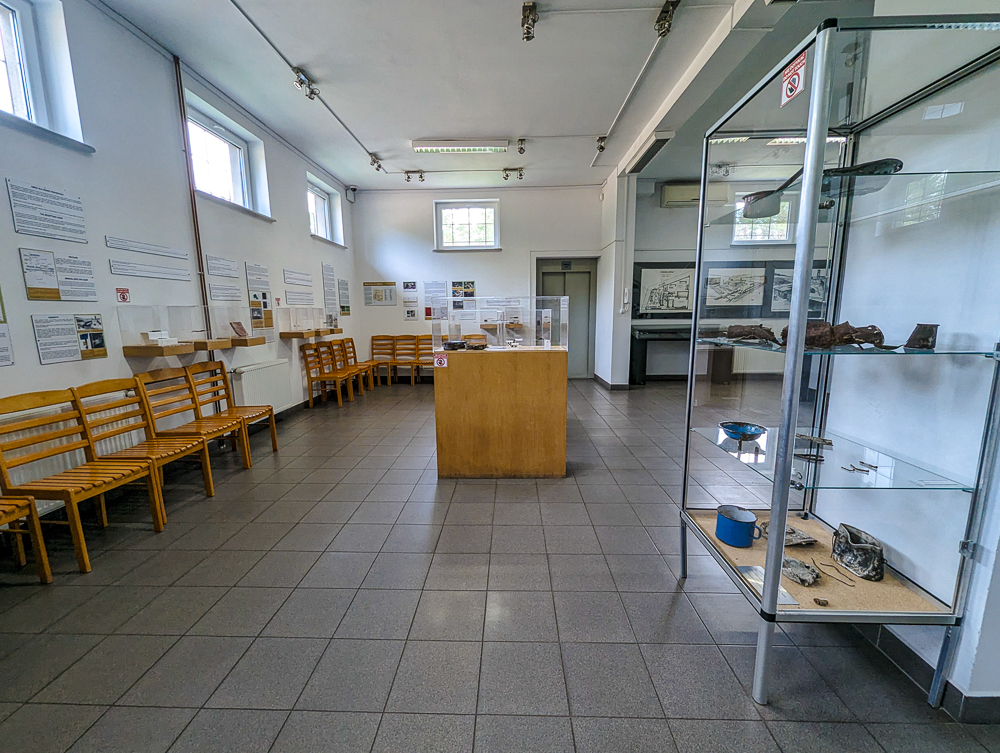
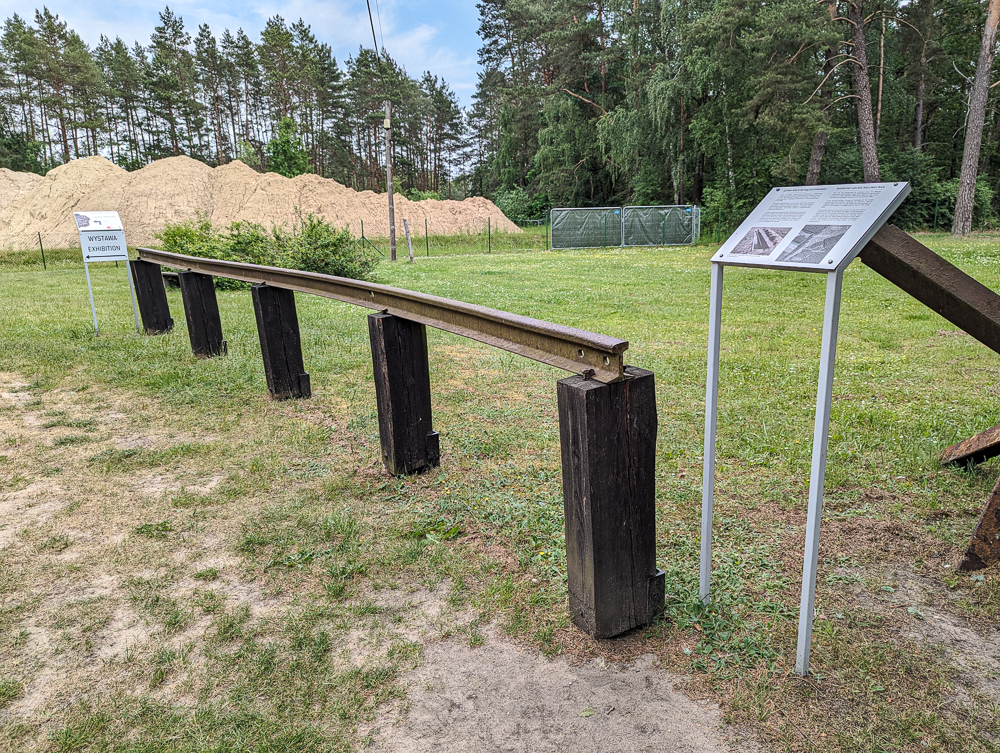
Treblinka memorials
Walking from the museum farther into the woods, you’ll pass several memorial structures like the two large blocks signifying the gate into the camp (shown above), the concrete blocks that represent the railway, and the 11 stones that feature the names of the countries from which Jews arrived here. Throughout the area, you’ll find several information signs and other memorial markers that denote the location of different areas of the camp.
Further in, you’ll come to the large stone monument designed by Franciszek Duszeńko and erected here in 1964. (He also designed the Monument to the Defenders of the Coast on the Westerplatte in Gdansk.) Surrounding it, 17,000 stones symbolize Jewish headstones.
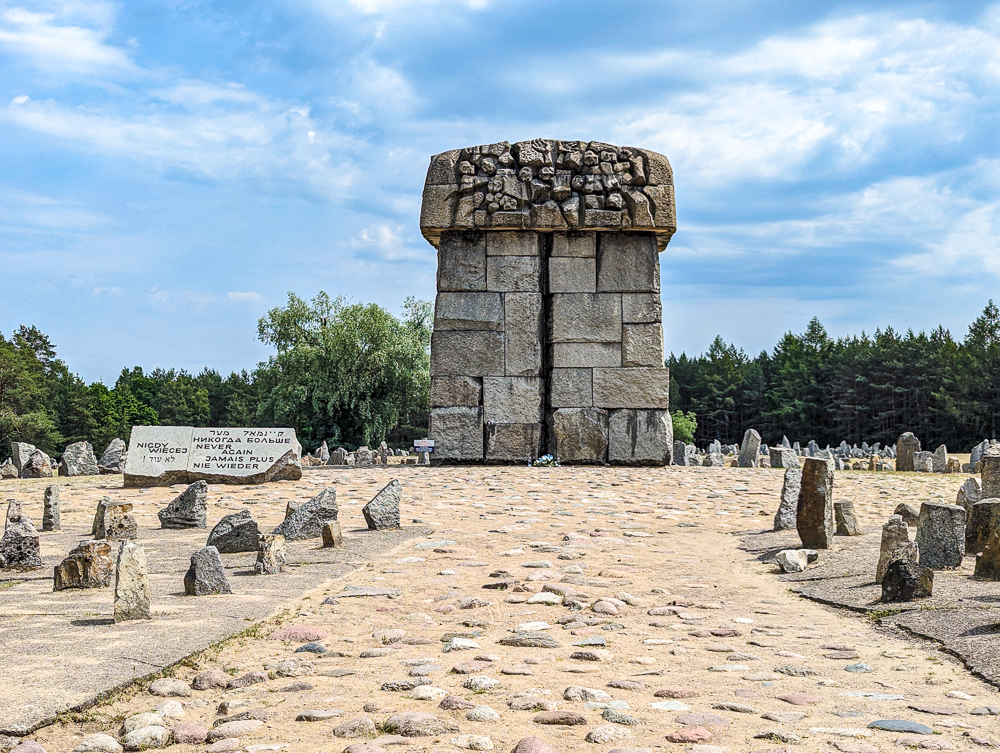
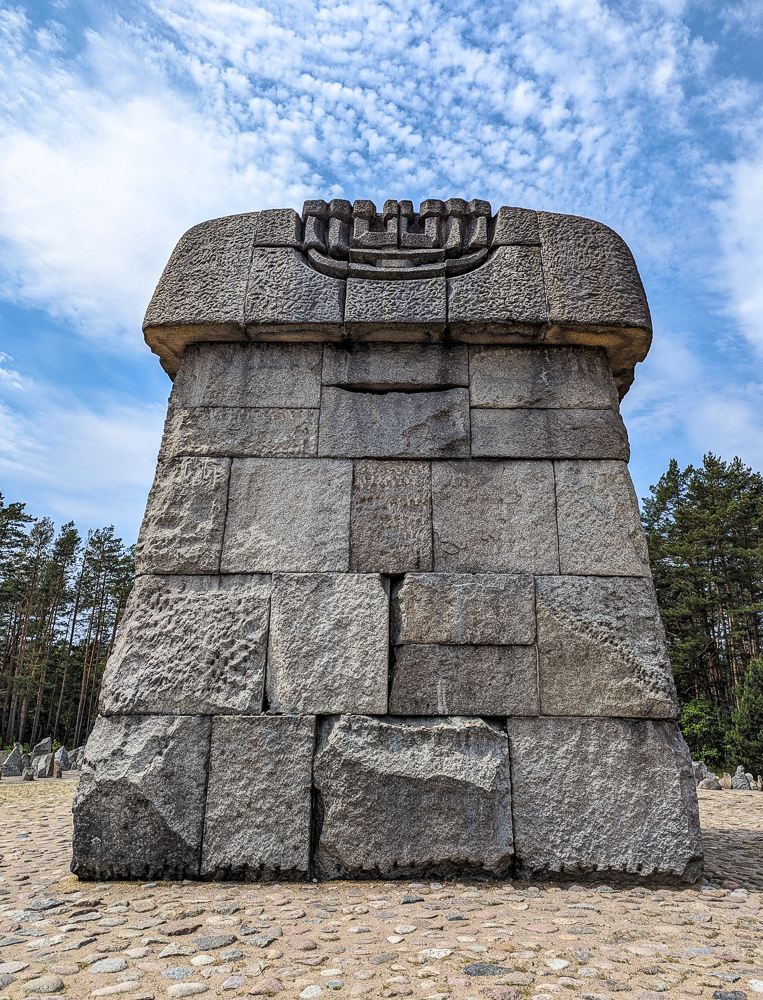
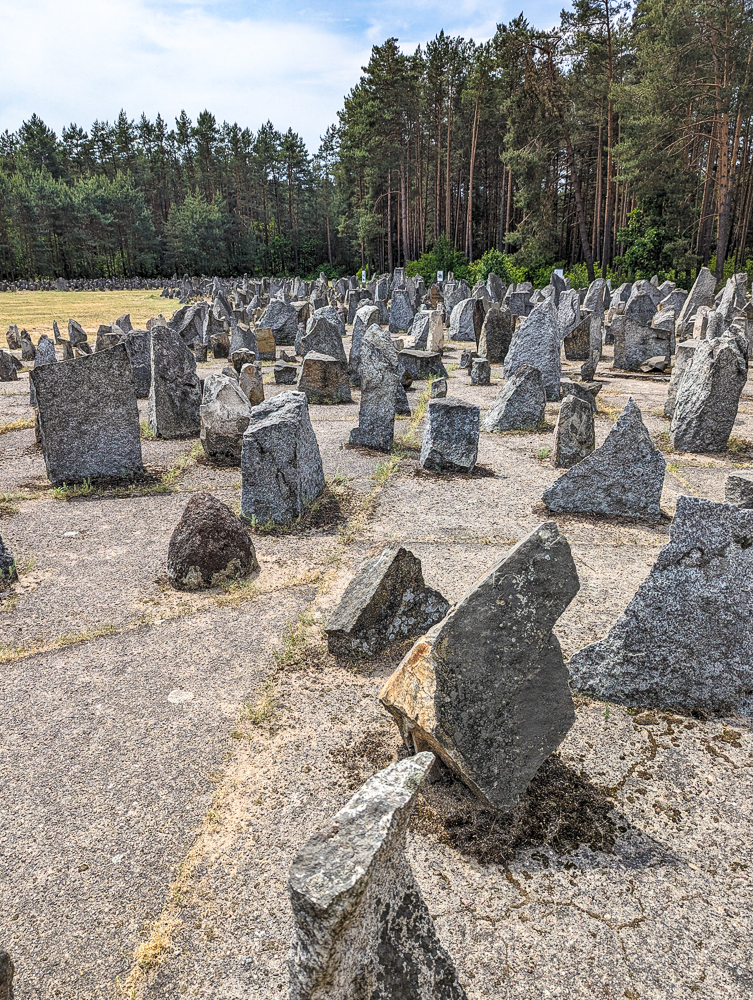
Other memorial spaces
Continuing on, you can also visit the former locations of such sites as: the former camp grounds, the gravel pit where forced laborers worked, a symbolic cremation site, the outlines of the prisoner barracks in the labor camp, and more. You’ll find more informational signs and panels spread around these forested areas and even more monuments and memorials. Refer to the map here to see how they’re all spatially connected.
Farther up the main road from the Treblinka museum area (about 4 minutes by car), you’ll be able to see the Commemoration of the Former Treblinka Railroad Station. Look on the map for “Upamiętnienie dawnej stacji kolejowej w Treblince” (just 3.8km away. Completed in 2020, there’s now a paved parking area for visitors and a few information boards.
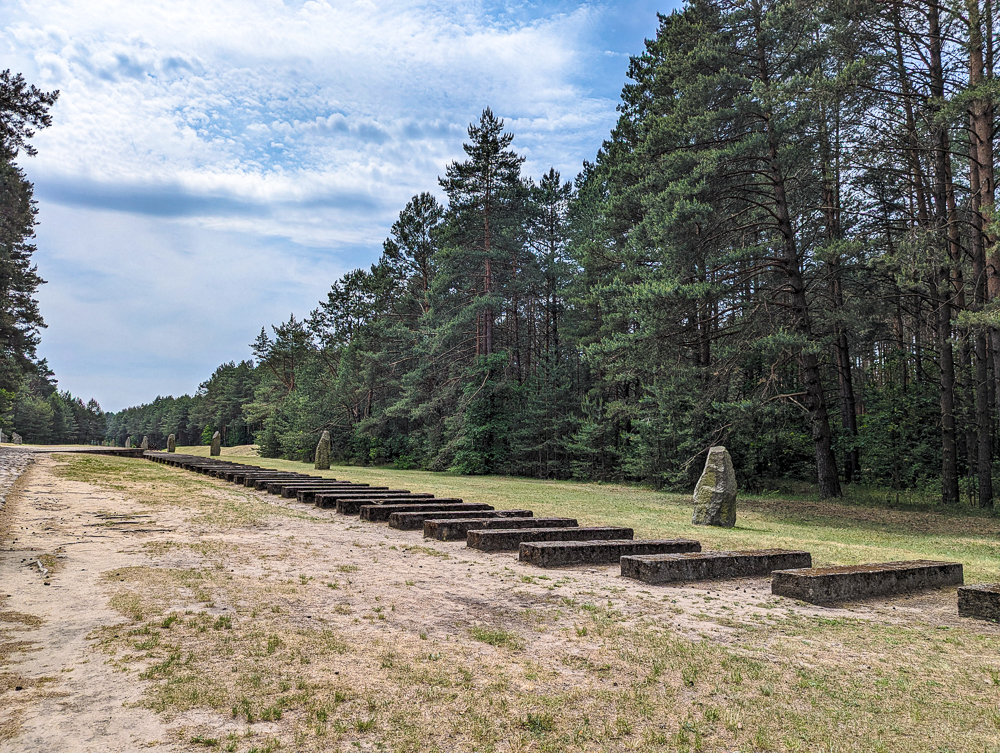
What you need to know for visiting Treblinka
Here are a few important things you need to know for visiting Treblinka:
Prepare for the elements
After visiting the museum, you’ll spend most of your time at Treblinka outside. Definitely take the day’s weather into consideration when heading out in the morning. In rainy weather, wear a rain jacket and rain pants, bring an umbrella, and maybe have a towel handy in the car. If you use them, walking poles would definitely help here.
In the summer, wear a sun hat and sunscreen, bring a bottle of water, and maybe consider bringing a small portable fan if it’s really hot. In the winter, be sure to dress extra warm and prepare for trudging through snow.
Likewise, you’ll need to wear some outdoor-appropriate shoes. You’ll be walking a lot here on a variety of surfaces: gravel, uneven stones, grass, mud, dirt, and more. Weather depending, those surfaces could also be wet, snowy, and slippery.
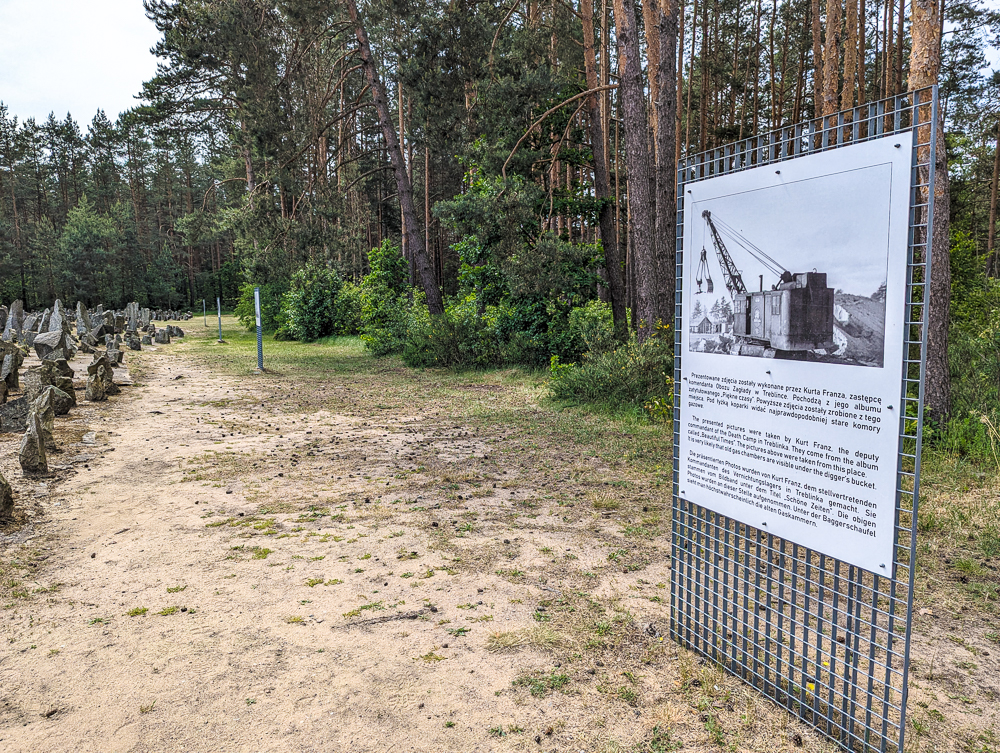
Accessibility
The Treblinka Museum is wheelchair accessible. The memorial spaces are paved with rough stones mixed in with dirt. Take a look at the photos in this post so you can judge if the outdoor spaces are a fit for you.
A few additional things to know:
- Visitors under the age of 14 are not recommended
- Guided tours are available (in English) if coordinated in advance. See this page for details and contact info.
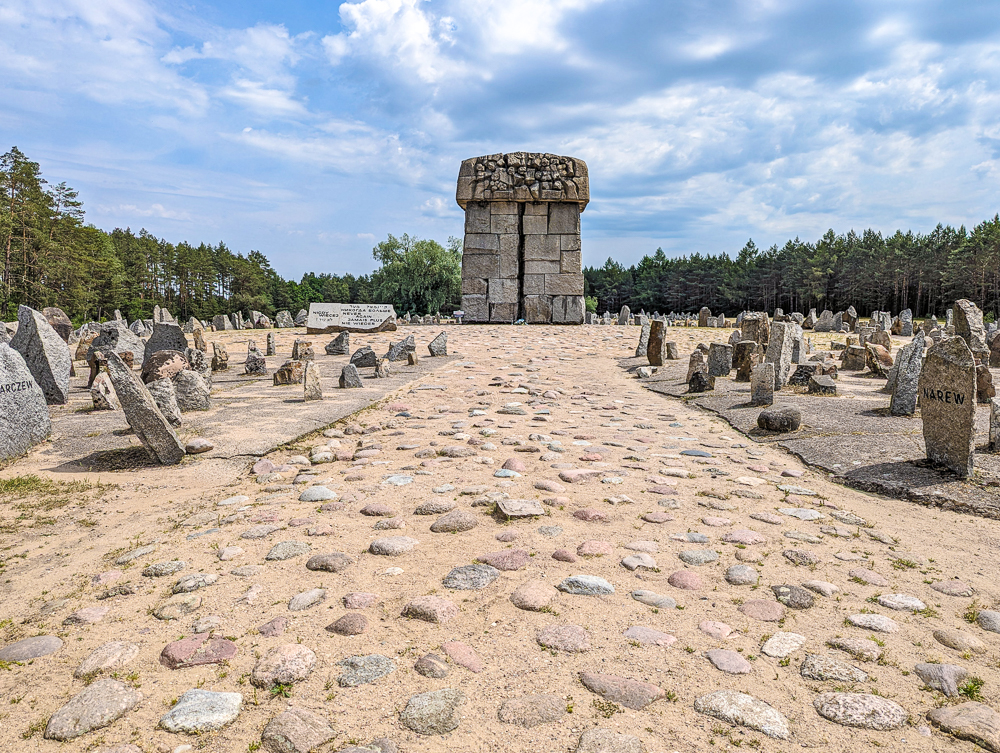
How to act at Treblinka
Hopefully you won’t see any inappropriate behavior while visiting Treblinka like I’ve seen at many camps and historical sites. Even so, here are a few simple rules to follow yourself while here:
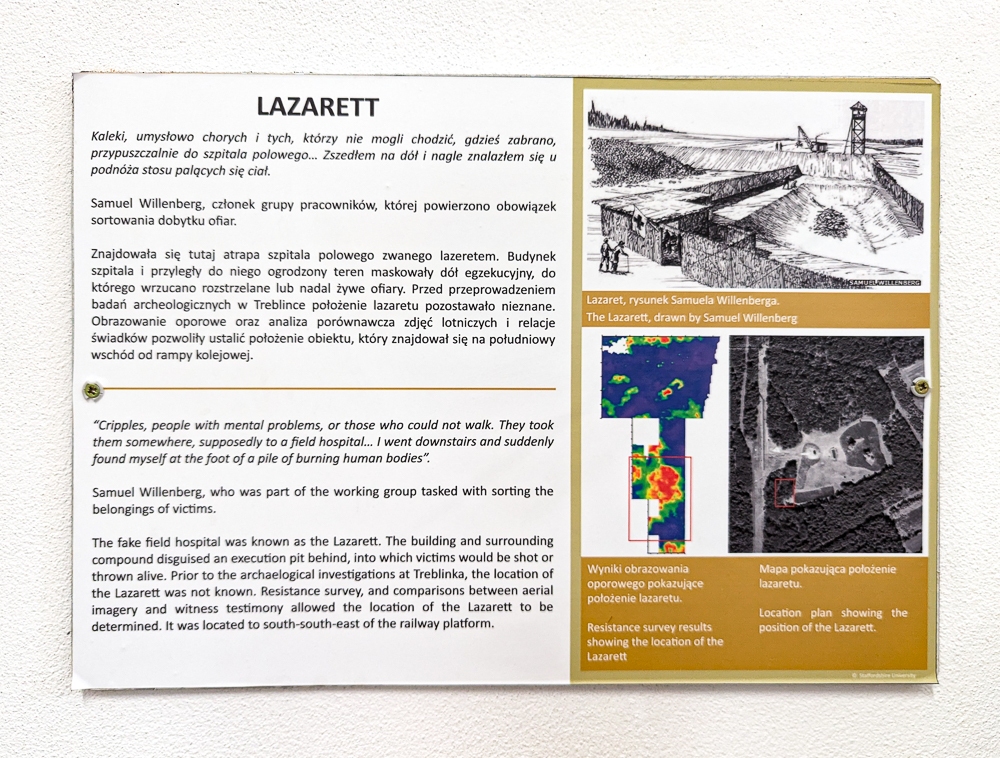
Visiting Treblinka: Essential information
Here’s all the necessary visitor information you need to plan your trip to Treblinka (accurate as of March 2025):
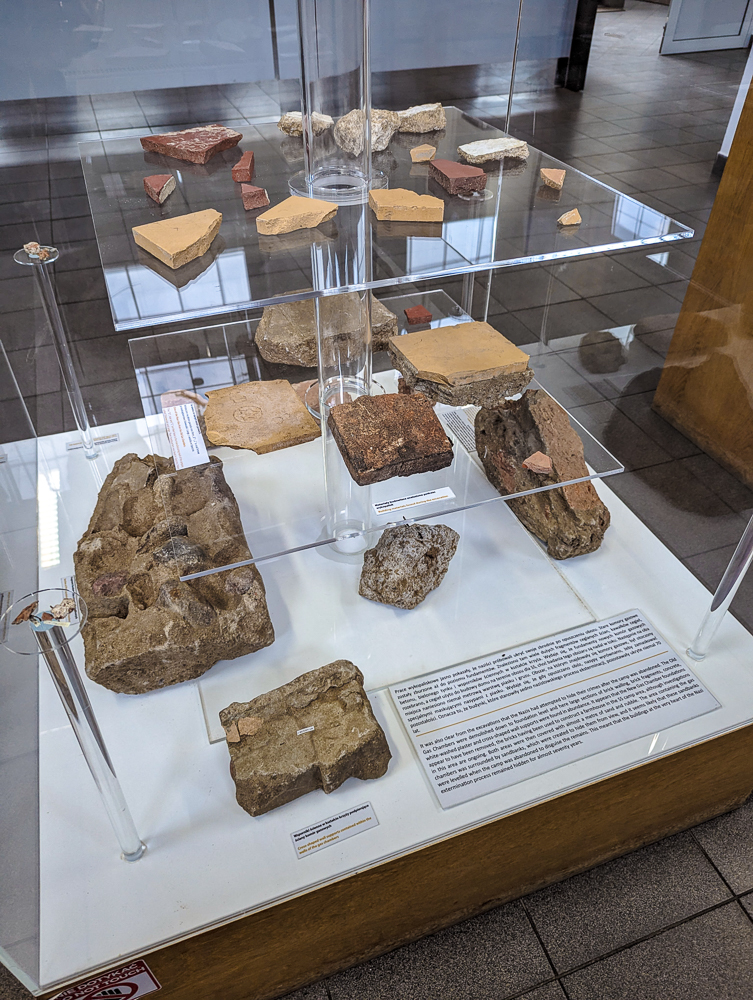
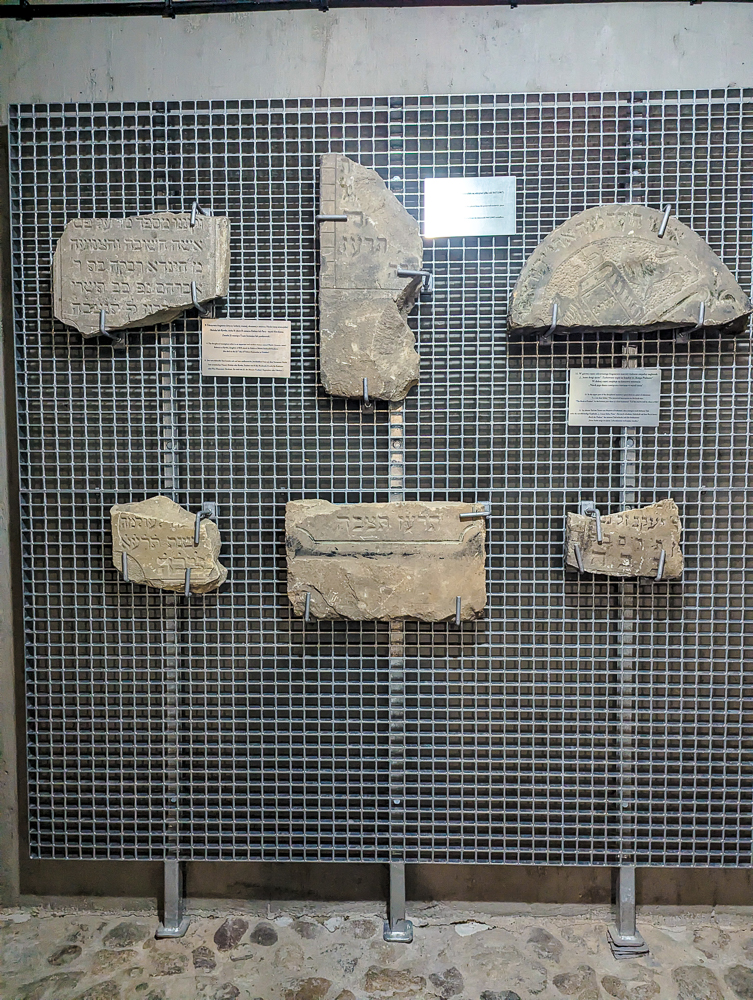
Suggested books for visiting Treblinka
Here are a few great books you can read to prepare for visiting Treblinka:
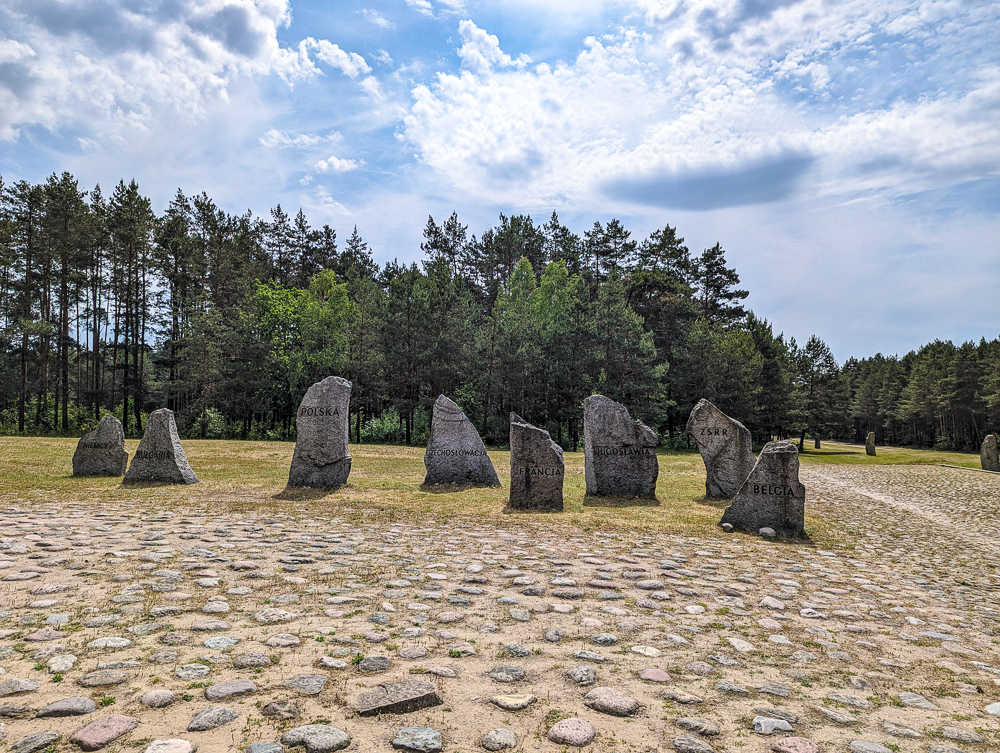
Suggested movies and TV shows for visiting Treblinka
Here are a few great movies you can watch to prepare for visiting Treblinka:
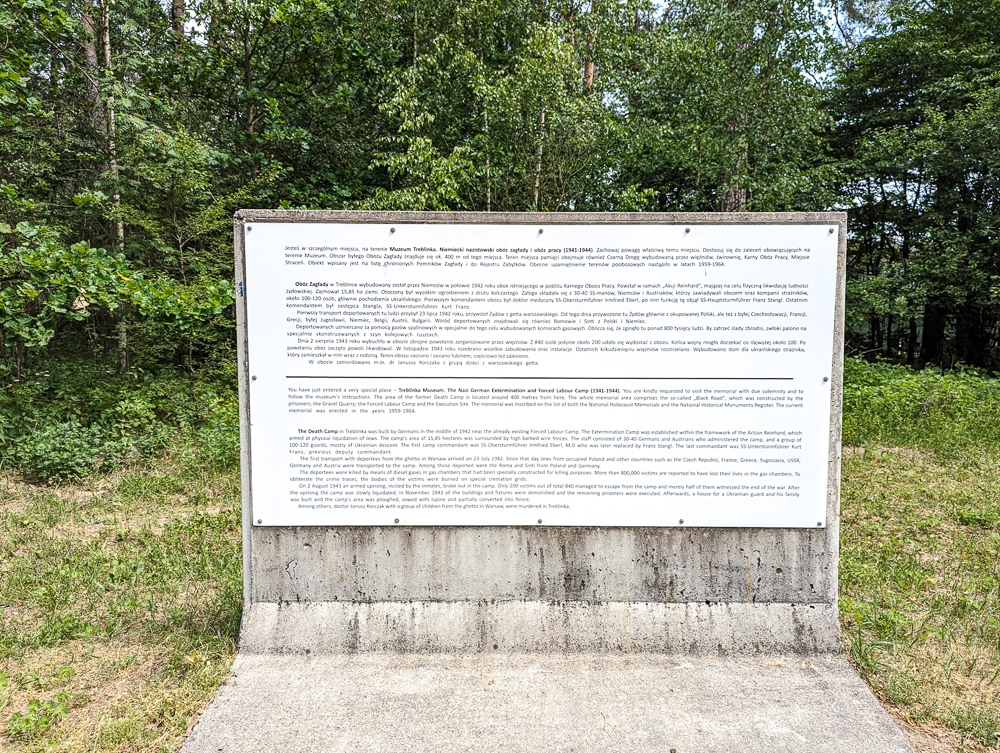
For more great books to read and movies to watch before visiting Poland, see my full list in that link.
Where to stay in Warsaw
Warsaw is the closest major city to the Treblinka Museum and Memorial which is also where I stayed before my visit. Here are a few suggestions on where to begin your hotel search:
There are plenty more Warsaw hotels to choose from though; see all Warsaw hotel options here.
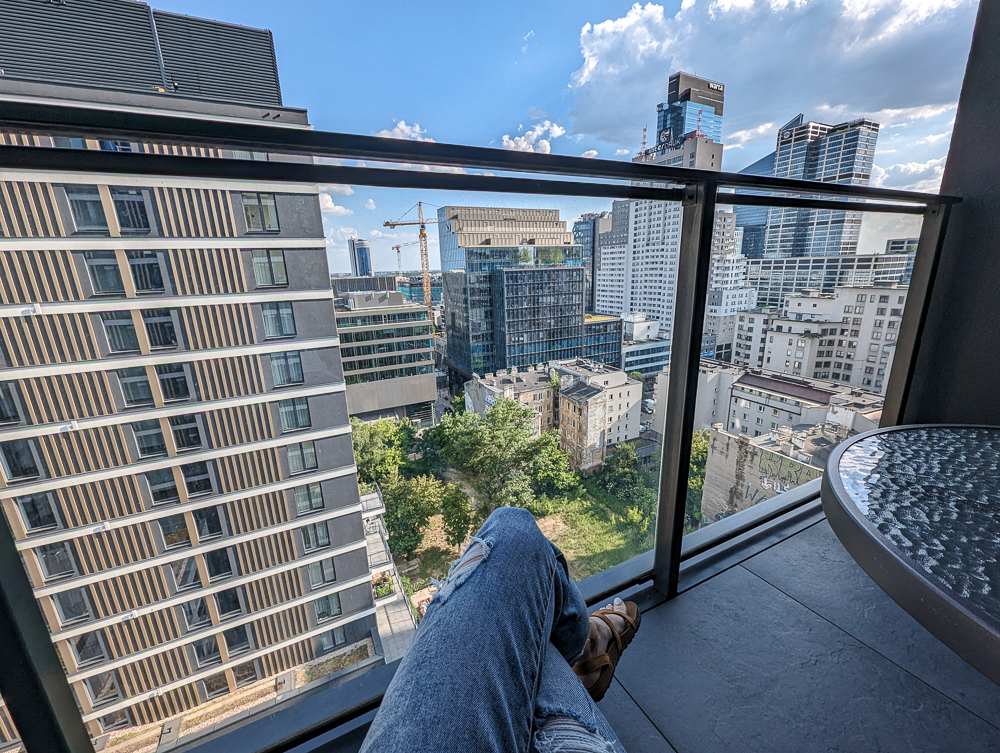
More info for your visit to Poland
- Hotels: Find great places to stay on Booking.com (my go-to). Expedia and Hotels.com are worth checking too. VRBO is best for apartment rentals.
- Rental cars: Check out the best local rental car deals here.
- For more local tours, check out all the options from Viator and Get Your Guide.
- Don’t forget a Poland guidebook and this must-have Poland customs and culture guide!
- Want more? See all my Poland posts here.
Like this post? Have questions about visiting Treblinka? Let me know in the comments below. Thanks for reading.

Save this info, pin this image:
